Traction Avant Gazogène Coal Gas Burners Storm Pebble Beach

By Marvin McFalls…..
In the 1870s, Town gas produced from coal was widely used, mainly for lighting purposes replacing older steam engines. By the turn of the century most users of town gas, had converted to gasoline or natural gas, but it remained in use in England until the 1960s due to an abundance of coal.
Gasification on motorized vehicles began in the early 20th century, primarily used in the mining and lumber industries. By burning these abundant resources; atmospheric nitrogen, carbon monoxide, hydrogen, and traces of methane could be captured and vaporized, ultimately propelling the equipment used in these industries.
But, even before the German invasion and occupation of France in World War II, gasoline had become expensive in Europe. So a grass roots movement had already begun, converting cars, trucks and even tractors in both countries. During the war, the German military placed Gazogène units on staff cars, trucks, artillery tractors and even tanks to preserve their limited supply of gasoline and diesel. In non-combatant countries, including: Sweden and Brazil, gasification became popular, as they had almost no local petroleum, and importing it was expensive and unreliable.
By the late 1930s, several companies were offering systems for a vehicle to turn solid fuel such as wood, coal or charcoal into vapors. However most were pretty crude, and many looked more like they were homemade than factory built. While others that were factory converted were poorly plumbed, making it difficult to enter the vehicle, let alone drive.
At this year’s Pebble Beach Concours, two Citroën Traction Avants, adapated to run with Gasification, were on display. How apropos it was to see them there with gas at record prices these days — especially in California.
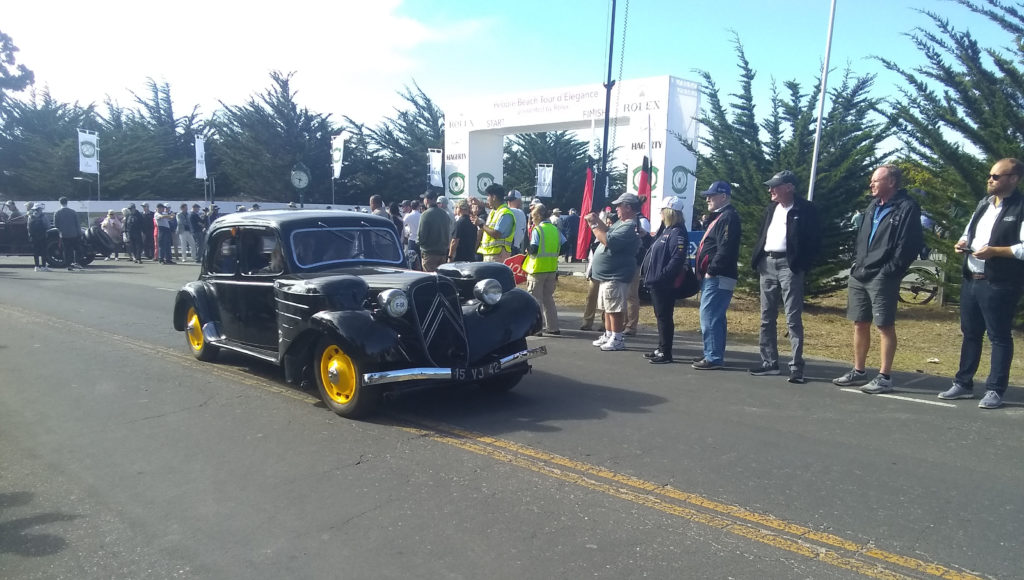
This 1938 Citroën Traction Avant, part of the Lane Motor Museum collection since 2006, was converted by Fap Elgazo Tarbes. While the adaptations were necessary to run on coal, they made an effort to fit the conversion to the vehicle without significantly changing the car’s overall appearance. The stock carburetor and intake manifold were removed and a mixing system was installed. The large cylindrical container on the left front fender is filled with coal and ignited. The mixture of gases flows through the cooling tube and into the container on the right fender to be cleaned and filtered. They were then fed through the mixing system and into the intake manifold where they were vaporized.
The Lane car came from the factory with a 1911cc engine with an 11/46 HP engine. Operating the motor on coal would reduce the engines horsepower output by as little as 20% or as much as 60% depending which sources you read on the subject, which there are few. This would reduce the top speed of 73mph to somewhere between 55 and 35 mph. Range has been reported as much as 40 miles before it was necessary to add more coal, depending on how well the coal was burning and how fast you were travelling. To get a better idea what type of range they could expect with their Gazogène, the Lane Motor Museum contacted Les Gazogénes, which is a club in France open to any type of gasification powered vehicles. Les Gazogénes can drive on gasoline and you typically do that when you start-up. It takes twenty minutes after the fire is ignited before you can drive on coal gas.
Les Gazogénes believes that approximately 500 cars, but not certain how many of those were Traction Avants, have been converted by Fap Elgazo Tarbes. However, only a few of their conversions survive today. It is believed that during the war at least 100,000 vehicles were converted throughout Europe, but not certain how many of those were automobiles. However, once the fighting ceased, Gazogène conversion did not completely disappear. The original movement that had taken off during the Depression continued to find adopters, mainly due to even higher petroleum based fuel prices.
Among the Gazogéne cars being modified post war, was this 1956 Citroën 11 BL owned by John Rich Jr, of Gilberton, Pennsylvania.
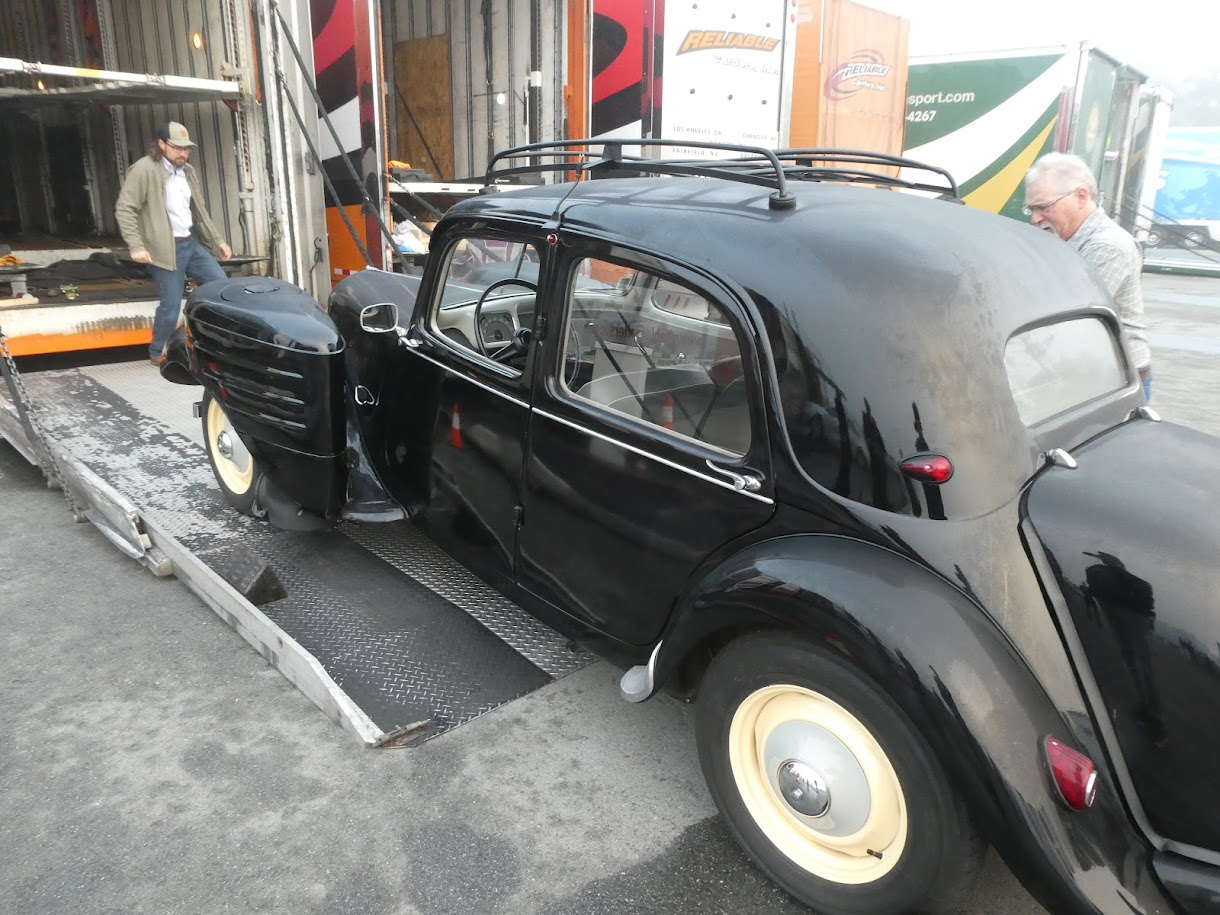

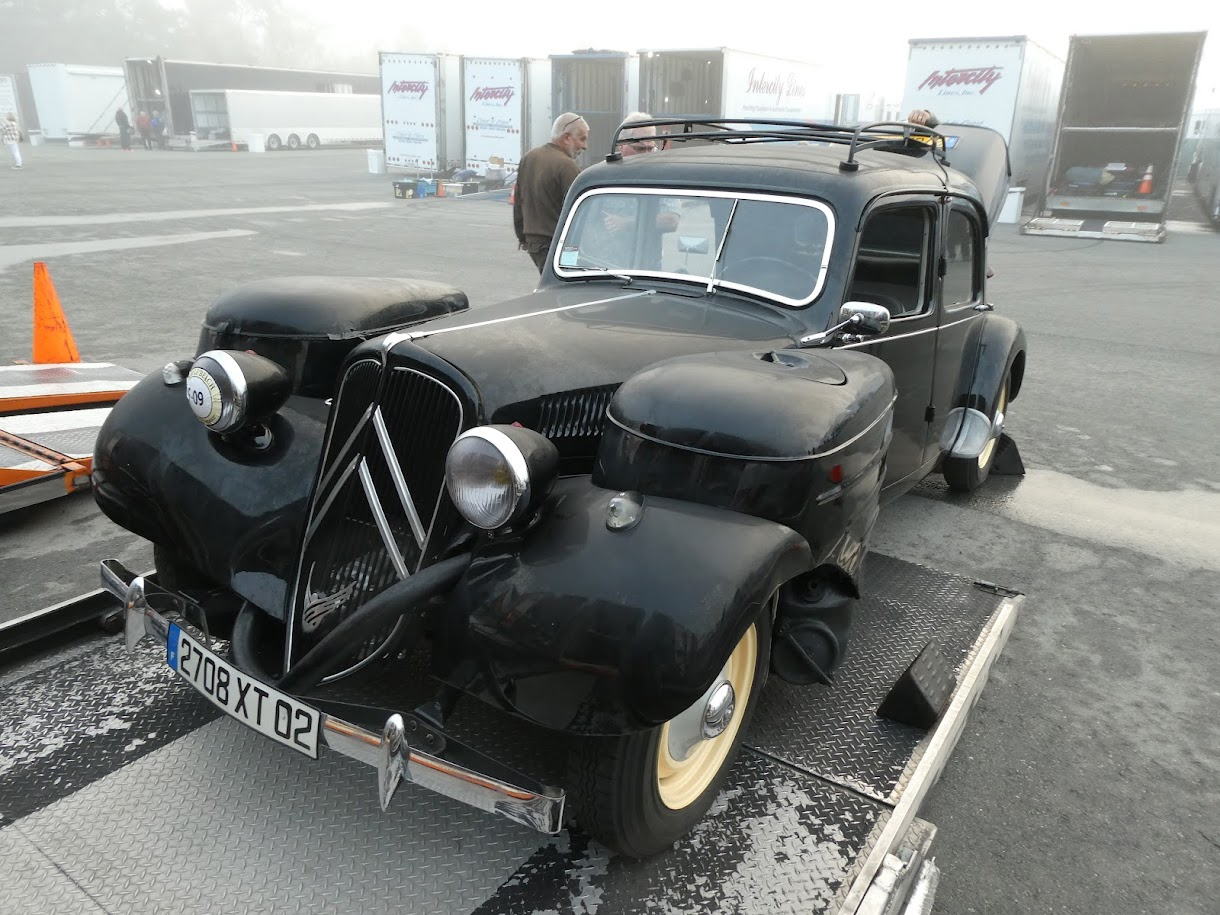


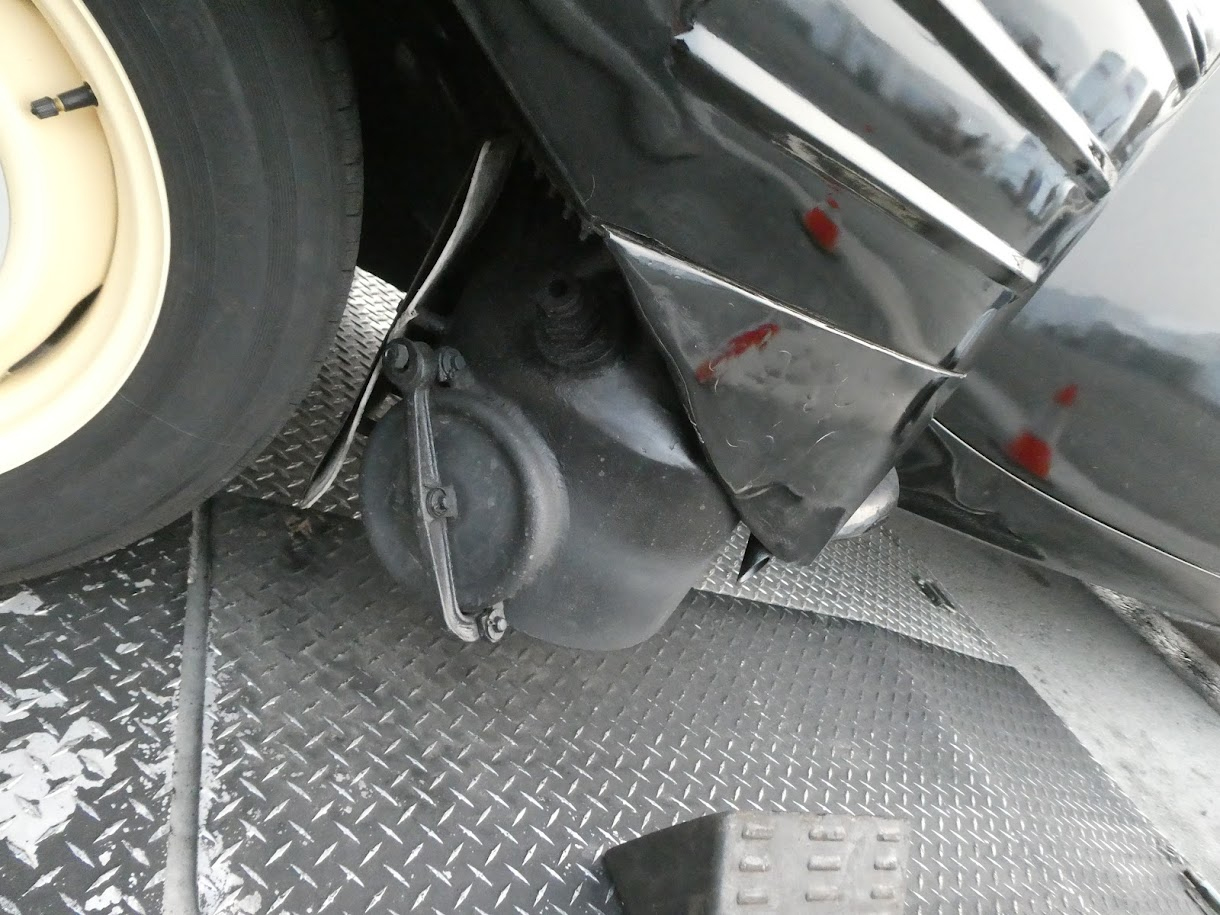
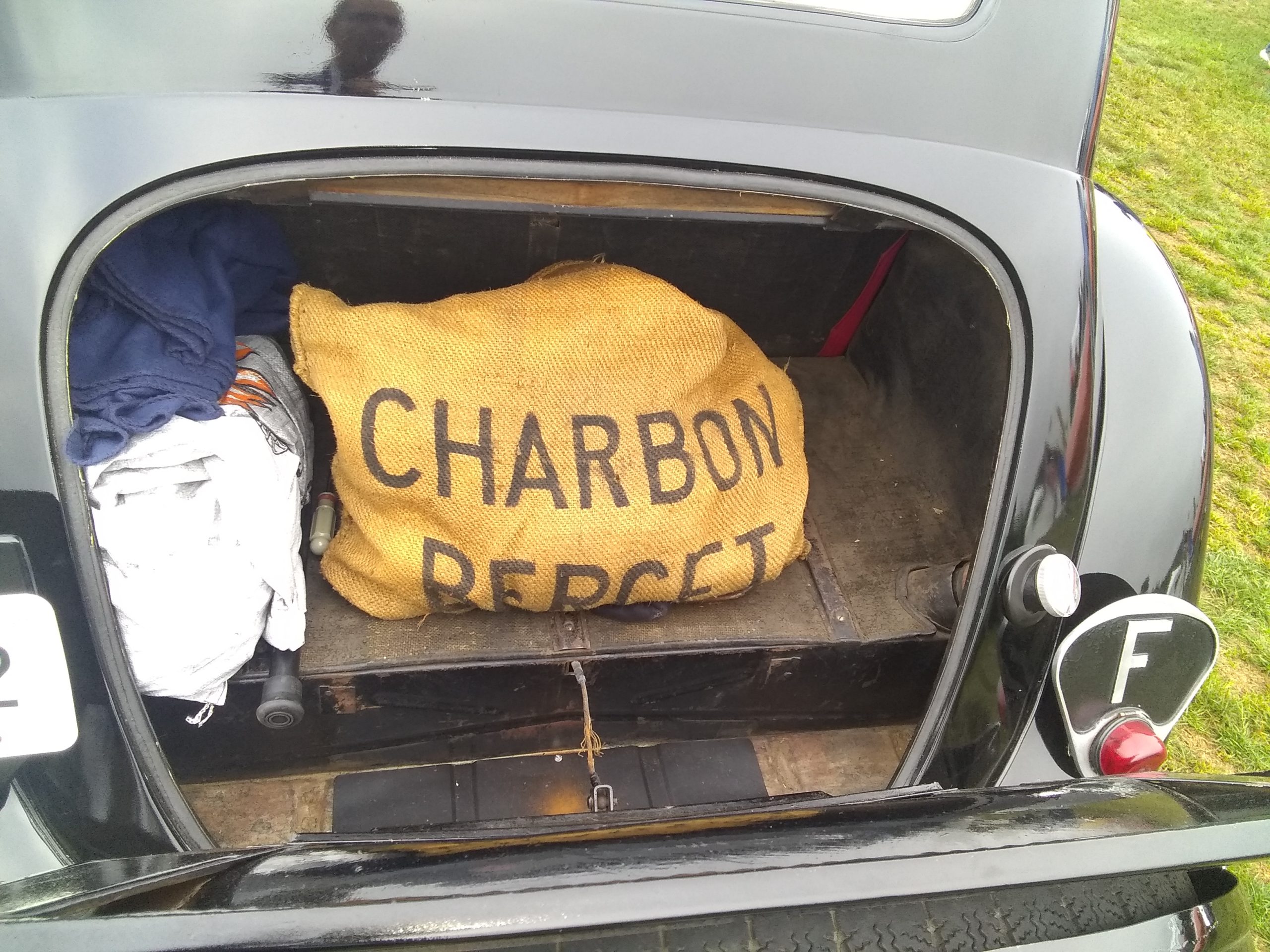

This car was originally acquired by his late father after encountering the Lane Motor Museum’s Gazogène at the Amelia Island Concours in 2006. The following year, the Senior Rich, acquired this fine example. Though it was not converted by Fap Elgazo Tarbes, it does have a similar overall design. Unlike the Lane car, the Rich Traction features a Gohin Poulenc gasifier that uses charcoal as its primary fuel source.
For one reason or another, neither of these two cars, have spent much time in the public eye, since first being acquired. The Lane car, has spent a great deal of its time in the Museum’s basement, though it has had a few stints on display in their main gallery over the years. While, since the elder Rich’s passing their example had remained dormant until the Pebble Beach Concours d’Elegance began searching for cars for a special display they gave the moniker; ‘Unorthodox Propulsion’. Among the ten vehicles chosen for this unique class included: early three-wheeled, steam, electric, radial-engined, and gas turbined. Though after the Gazogènes, the most unique form of propulsion had to come from the electromagnetic transmission of the 1916 Owen Magnetic.
Needless to say, with so many unique vehicles in one group, the exhibit remained crowded with people all day. The Lane museum staff did a fabulous job of building a unique display highlighting their vehicle’s unique fuel delivery system, making it much easier for Museum Founder, Jeff Lane, to explain to attendees.
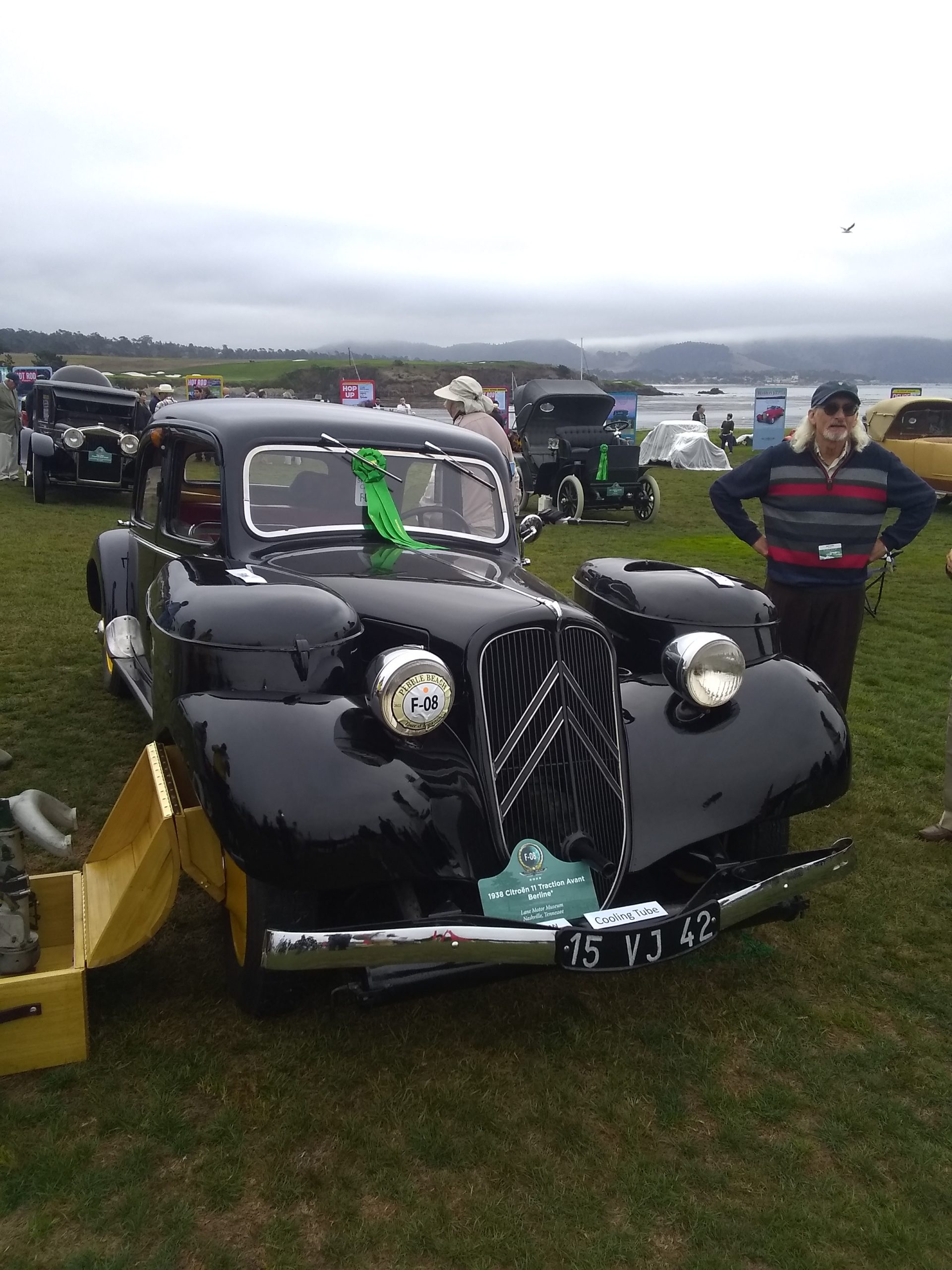

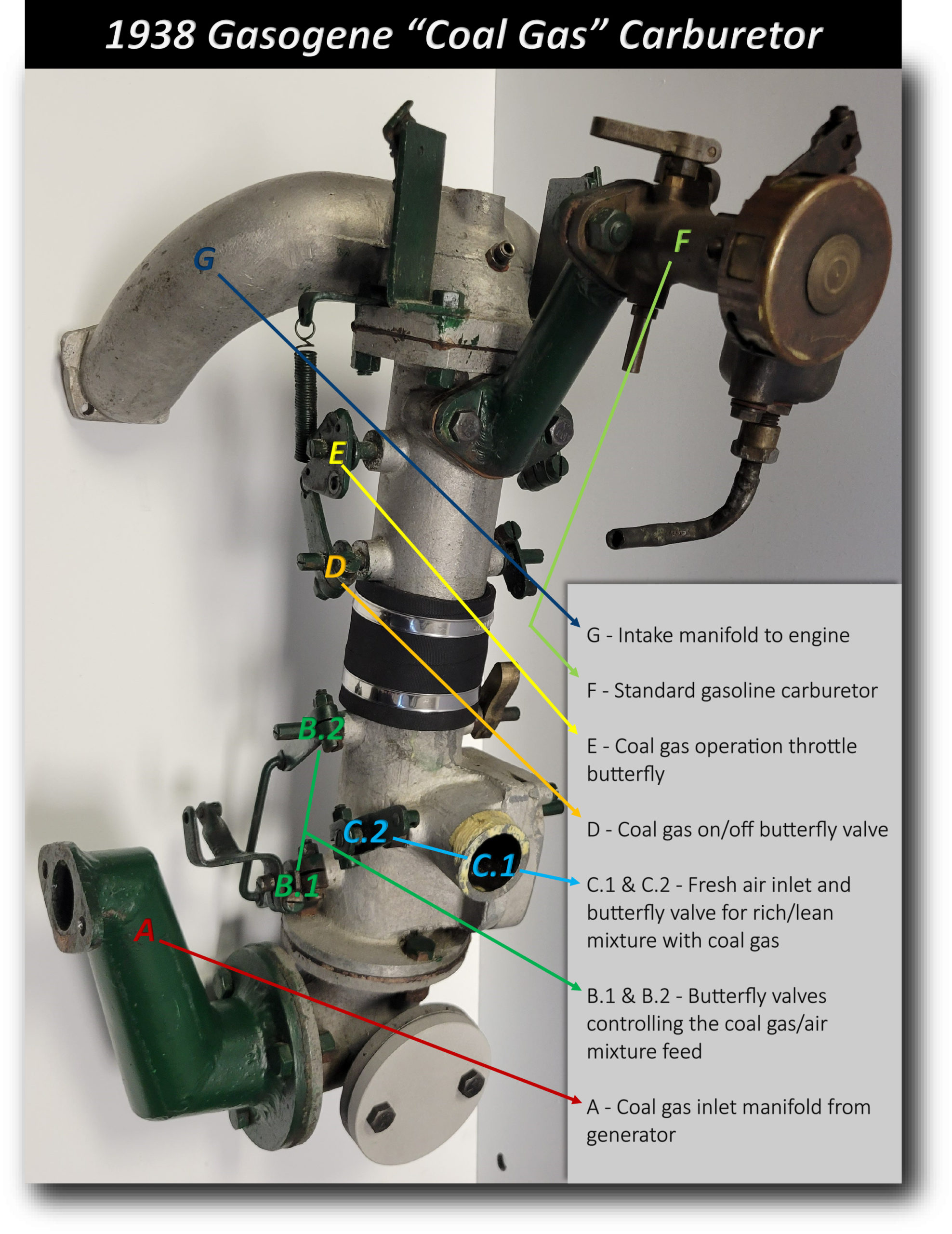

The Rich team, had rerouted their concoction of gases and smoke from their fire, demonstrating its potency by igniting it with a torch. Though, it took three smoky and sooty attempts, before they found the right combination of fire and flame to visibly demonstrate the burning of the mixture of gases.
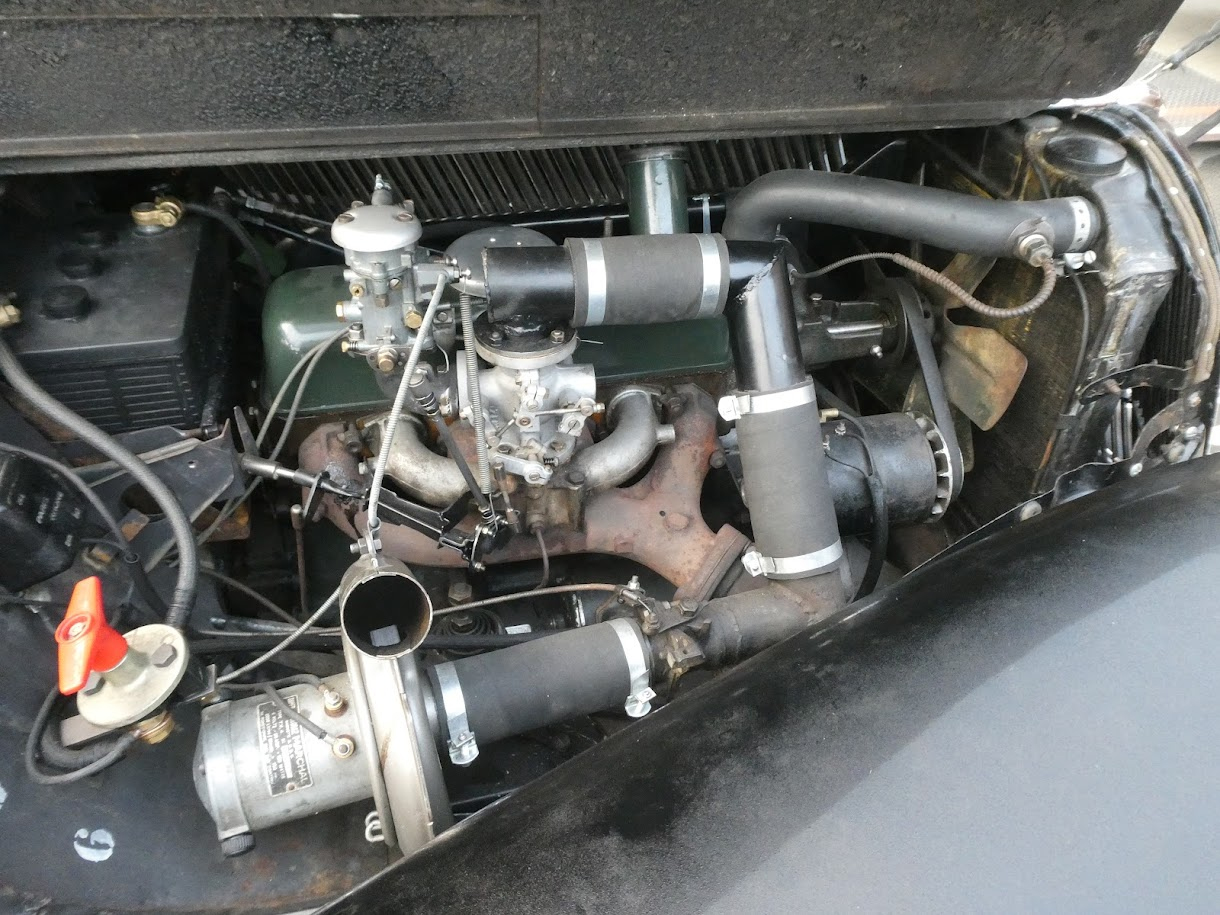
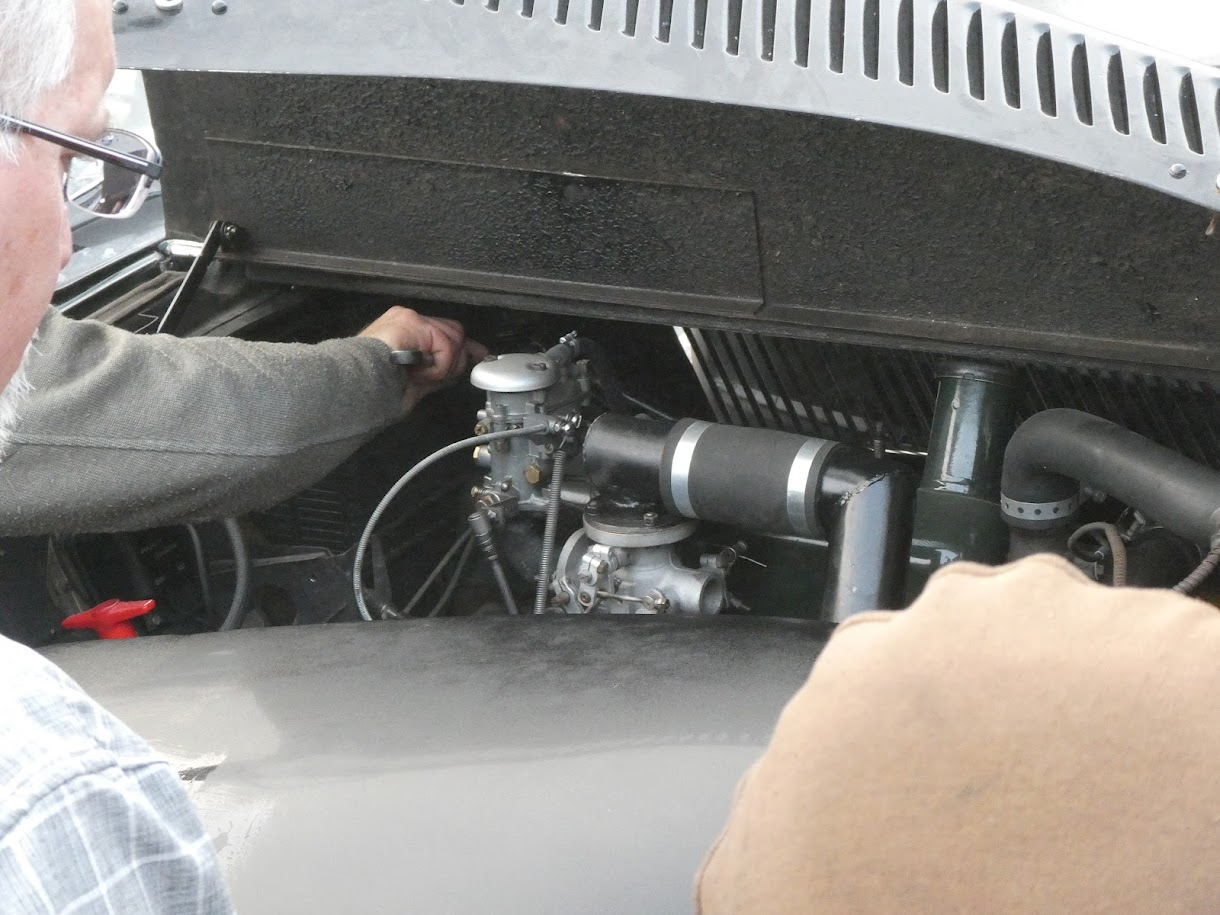

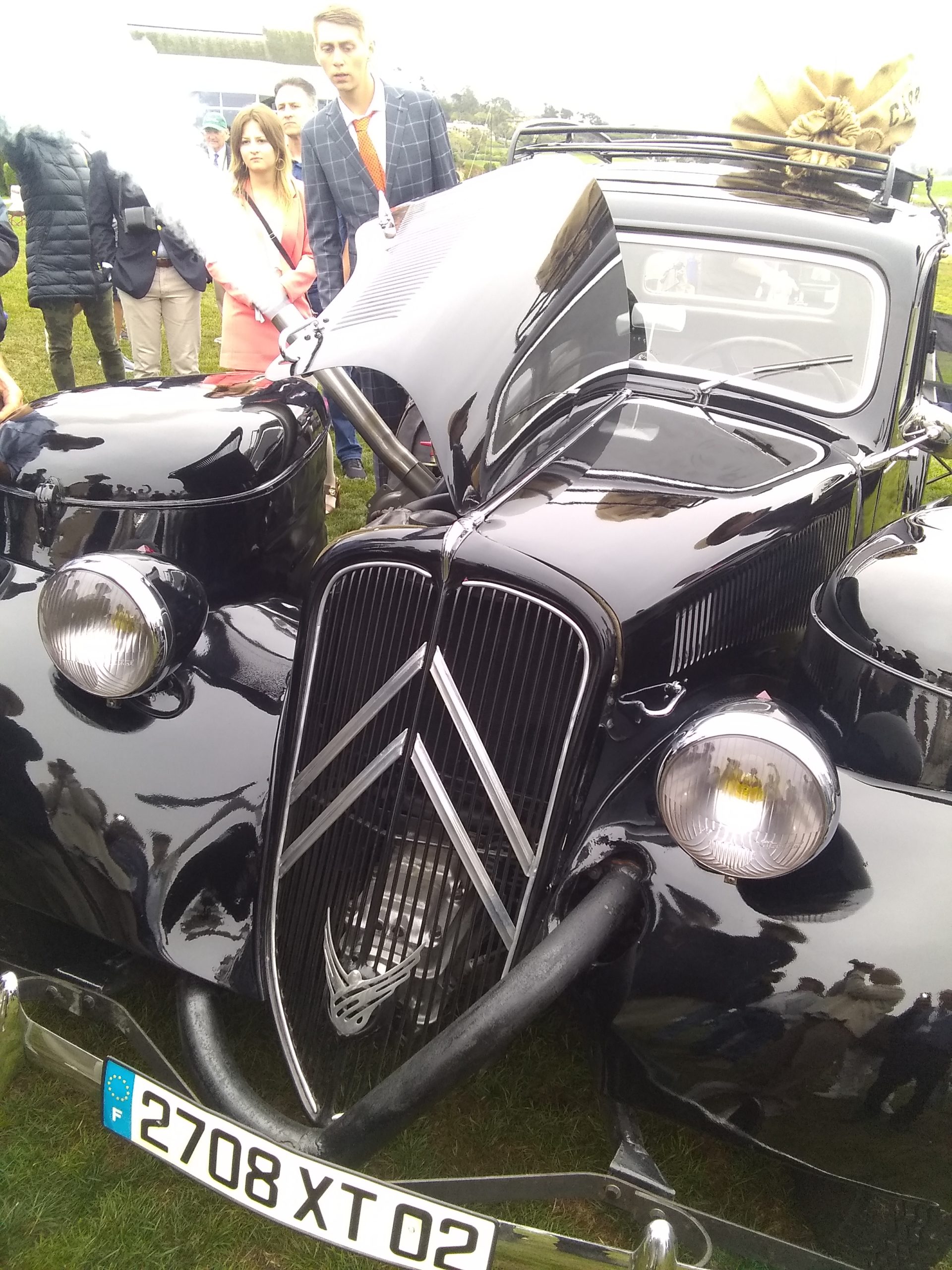
While a number of prizes were awarded in the class, neither of the Gazogènes, were invited on to the ramp. However this did not seem to dampen the enthusiasm for the cars of the entrants or the spectators. Hopefully the Pebble Beach organizers will make Unorthodox Propulsion vehicles a regular exhibit, or come up with some other outside the box displays, as this was definitely on point. Even if a return to the Monterey Peninsula is not in the cards, maybe it will trickle down to some of the other regional concours events around the country.
It was definitely an entertaining history lesson, enjoyed by a significant percentage of the crowd.
Watch a video of the Lane Motor Museum Traction Avant at Pebble Beach here at the 42.45 mark:
